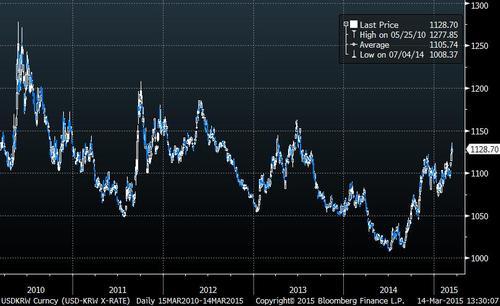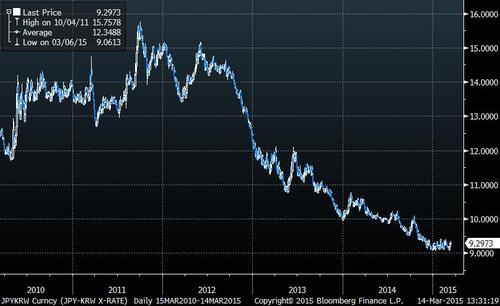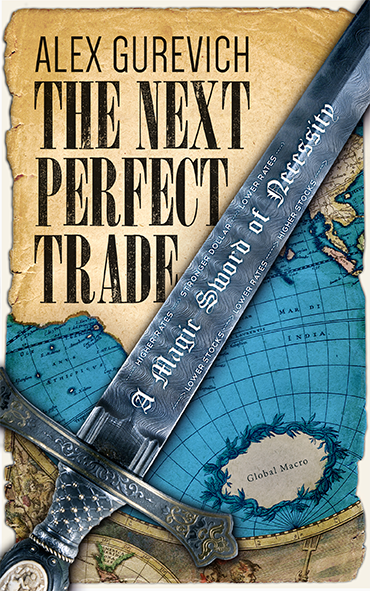
The dollar chart is no longer parabolic. It’s vertical.

This by itself is not an indicator, that we have to close the long dollar trade. My general feeling is “Why give up on a good trend, while it lasts?”
On January 1st, 2015 I posted that I had reduced my short Yen risk and focused on short Euro. My relatively conservative risk commitment at the beginning of the year allowed me to build a short Swiss (long USDCHF), after the SNB surprise action had sent the currency into the opposite of freefall.
But now both EURUSD and USDCHF trades have moved enough to be considered mature along with USDJPY.
Even the secular dollar bulls, who are calling for EUR to go back to 0.80 and JPY to 150, have to admit that more than half on the move has already taken place.
When EURUSD was at 1.35, it was easy for to say “I will stay short no matter what. If it goes a few % against me, I will just wait it out.” Now there is a lot to lose from 1.05.
So, are you prepared to sit on your short EUR position, if it goes back to say 1.15? Maybe you are. But it is not crazy for even the greatest dollar bulls to think of some risk management. For some it means reducing positions, for some trailing stops. Personally, I prefer the former.
As I am taking some profits on EUR and CHF, my thoughts are turning to currencies that haven’t moved quite as much and still have space to catch up in the devaluation race.
You might have guessed what part of the world I am thinking of from the picture upfront. China, Taiwan, Australia, New Zealand, Korea, and so on.
Australia in fact has already moved a lot as well. But New Zealand, as I have written before, looks very expensive against its larger neighbor. So I have recently decided to swallow the negative carry pill and establish a small NZDUSD short.
China is the focus of raging debates and what is actually going on there is beyond the scope of this post.
I would like to have a better look at South Korea, which delivered a surprise rate cut last week, confirming its participation in the race to the bottom.

Indeed KRW has weakened somewhat against the US dollar. But the 10% retreat to the highs is not that substantial. If you substitute USD by the currency of their closer neighbor – JPY, you will see a very different picture (lower number means stronger KRW).

So we have a theme similar with China and New Zealand: the carry is not great (though closer to zero in the case of Korea), looks weaker relative to USD, but strong relative to some key counterparties.
I have to confess, I am not at all an expert on Korean economy.
Rather than to analyze specific countries, I want to focus on the general theme. How much downside is really there in being short USDNZD, long USDCNY and USDKRW?
Yes you might have to eat some negative carry, but are you worried about catastrophic appreciation of any of those currencies?
So now that we have (hopefully) booked some profits on easy positive carry trend trades in EUR, JPY, and CHF; is it worth to pay some carry in places where the downside is not that big?
I find it hard to imagine the world in which the broad dollar continues and the “catch-up” currencies do ont devalue as well.


